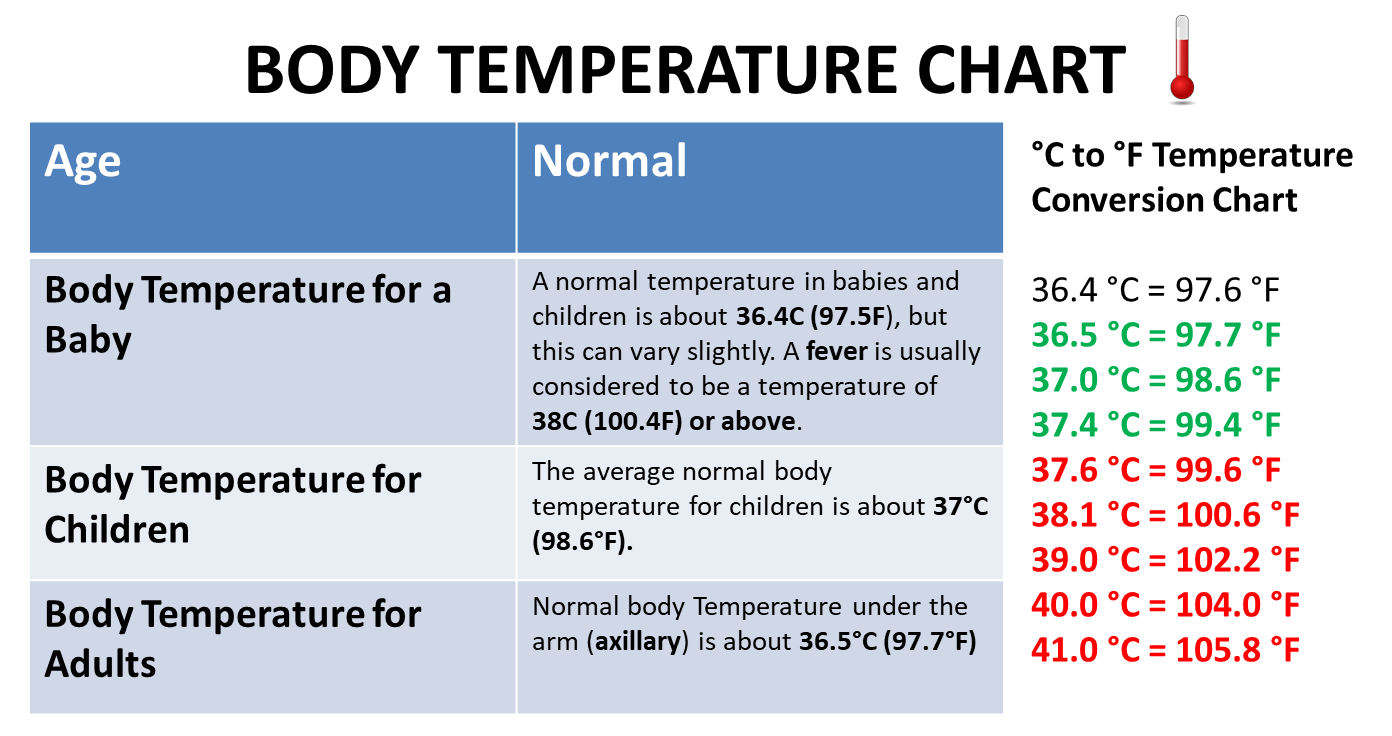
- #Body temperature conversion oral vs. axillary how to#
- #Body temperature conversion oral vs. axillary full#
Some slide across the forehead others are held stationary in one area. To take forehead temperature, use a forehead thermometer. It also doesn’t cause much discomfort and getting a reading is very fast. Remove the thermometer carefully and read the temperature.įorehead temperature is the next most accurate reading behind ear, oral, and rectal temperatures.Press the thermometer’s temperature reading button down for 1 second.Tug softly on the outer ear so that it’s pulled back and gently push the thermometer into the ear canal until it’s fully inserted.Add a clean probe tip to the thermometer and turn it on using the manufacturer’s instructions.To take ear temperature, you need a special ear thermometer.
#Body temperature conversion oral vs. axillary how to#
Here’s how to measure temperature in areas other than the underarm: EarĮar temperature usually reads a bit lower than rectal temperature. There are several ways to measure a person’s body temperature. Other thermometers to measure temperature It’s considered safe to take a child’s forehead temperature but be sure to use a forehead thermometer made for this purpose and not forehead strips. Oral thermometers aren’t recommended for young children, as they often have trouble keeping the thermometer under their tongue long enough for a temperature reading to be taken.


Hold the thermometer to keep it in place, and make sure they don’t move around while the thermometer is underneath their arm, which can throw off the reading.

Take a child’s underarm temperature the same way you’d take your own.

It’s also commonly used to check temperature in infants to 5-year-olds because it’s one of the easiest, least invasive methods. Underarm temperature is considered the safest way to check the body temperature of children under 3 months old. How to measure an infant or toddler’s temperature However, measuring your axillary temperature can still be useful. But there are four other ways to take body temperature, and these involve different body parts:Įar, oral, and rectal temperatures are considered the most accurate readings of actual body temperature. Having a temperature that’s much warmer or cooler than your usual temperature, though, may indicate some kind of health problem, such as fever caused by infection or low body temperature caused by hypothermia.īody temperature is often measured by placing a thermometer in the mouth. However, some people have a body temperature that’s usually a bit warmer or cooler than average, and that’s normal. Normal body temperature runs around 98.6☏ (37☌), on average. Monitoring your body temperature can tell you important things about your health. However, they can still be helpful for screening changes in body temperature.
#Body temperature conversion oral vs. axillary full#
Underarm (axillary) temperatures tend to be less accurate than oral body temperature by a full degree.


 0 kommentar(er)
0 kommentar(er)
